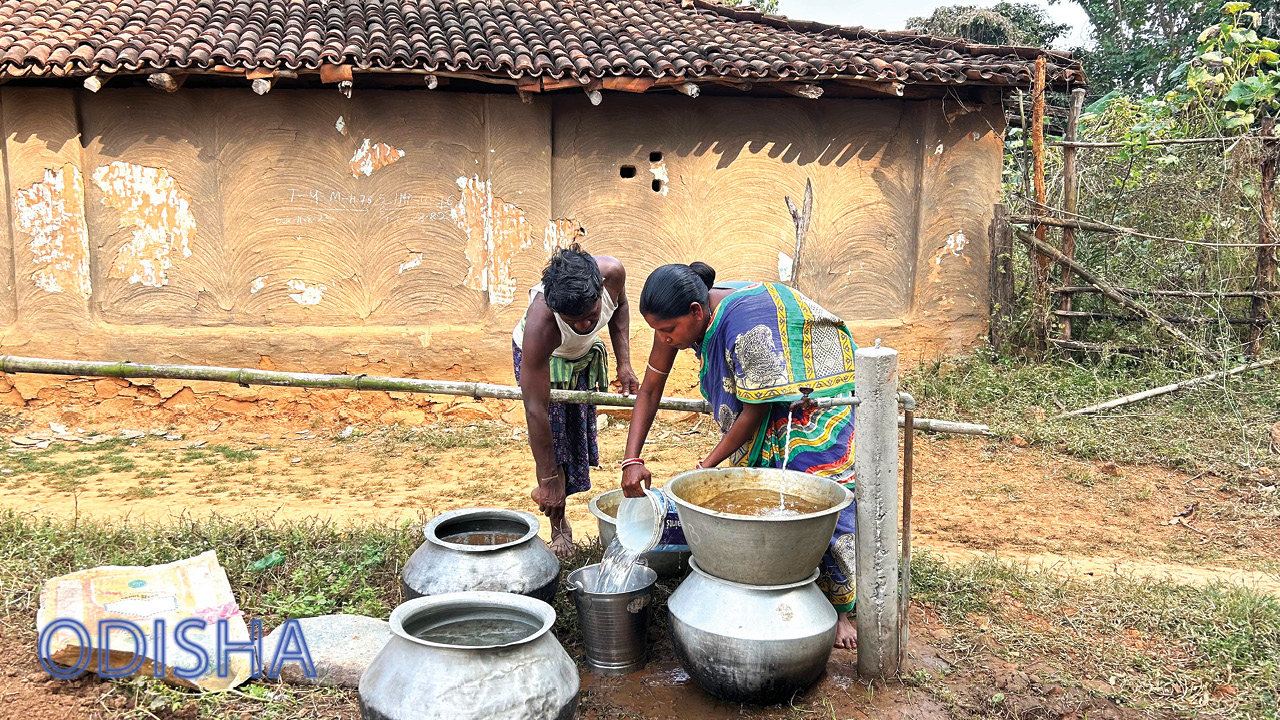Odisha continues to consolidate its status as a high-performing state in the SKOCH State of Governance ecosystem, securing the #6 national rank in 2024. While this reflects a dip from its top position in 2023, the decline is relative—arising from rising competition among states—rather than a weakening of governance performance. Odisha remains a consistently strong performer, anchored by policy efficiency, administrative innovation, and sectoral diversification. A total of 31 well-performing projects were submitted, including 4 highly impactful and 8 impactful ones, spanning across 14 governance categories.
What sets Odisha apart is the qualitative depth and sectoral breadth of its governance interventions. Leading the country in Social Justice & Security and Women & Child Development, and ranking #2 nationally in Finance and Rural Development, the state has demonstrated a clear focus on economic inclusion, human development, and fiscal resilience. Its comeback in Power & Energy (#6) and General Administration (#7) also reflects growing maturity in resource and institutional management.
These rankings are underpinned by innovative and scalable projects:
- The Pada Pushti Karyakram addresses early childhood malnutrition in hard-to-reach tribal areas through community-managed feeding sites and has already reached over 18,000 children in 2,500+ locations, enhancing nutritional outcomes through localised, culturally sensitive models.
- ORMAS’ Market-Led Livelihoods and Skilling initiative has empowered over 2.17 lakh rural youth with training and placement, while creating market access worth ₹1,800 crore through e-commerce and corporate tie-ups—highlighting Odisha’s rural economic transformation.
- The Gangadhar Meher Lift Irrigation Project is a benchmark in irrigation equity, providing water access to 129 drought-prone villages and increasing agricultural output fivefold. It represents one of the most cost-effective water management models using pressurised pipelines and micro-irrigation systems.
- DISHA, Odisha’s flagship substance abuse recovery initiative, combines rehabilitation, counselling, and vocational skilling. It has supported over 2,800 internal and external beneficiaries, making it one of India’s few state-level programmes tackling addiction through community reintegration.
- CSP Plus Banking Outlets, backed by a ₹500 crore outlay, have expanded banking access to 10 million citizens across unbanked Gram Panchayats, achieving ₹863 crore in transactions in just three months—showcasing Odisha’s push for financial inclusion.
- In animal health and productivity, the Mobile Veterinary Units now reach over 6,000 villages monthly, treating 3 lakh animals and administering 6 lakh vaccinations, while using geo-tracking for real-time monitoring.
- The Drone-Based EHV Corridor Monitoring Project brings AI-enabled predictive maintenance to 42,000 power towers and 433 transmission lines, reducing costs by up to 75% and enhancing grid stability.
- P-PAS (Paddy Procurement Automation System) leverages AI, GIS, and satellite imagery to eliminate fraud in paddy procurement, disbursing ₹37,000 crore to genuine farmers and saving ₹109.5 crore in MSP overspend.
- Initiatives like LAccMI (Location Accessible Multi-modal Initiative) have improved rural-urban connectivity for 10 million people and created 37,000 jobs, while women-led SHGs operate over 4,000 routes—highlighting gender-inclusive transport governance.
- Mission-mode efforts in energy conservation have led to 14.8 mTOE savings, formation of nearly 8,700 energy clubs, and mass LED distribution, establishing Odisha as a leader in carbon reduction strategies.
- TheConservation of Bhinjarpuri Cattle, a native breed, has boosted milk yields by 15% and increased genetic diversity, blending cultural preservation with economic viability.
- The Ensuring Equity and Inclusion in Pani Panchayats, initiative scaled participatory irrigation across 23 lakh hectares, mandating 1/3rd women representation, and bringing real-time monitoring to 25,000+ panchayats—proving transformative in grassroots water governance.
These diverse projects illustrate Odisha’s unique governance DNA—community-centric, digitally enabled, fiscally sound, and execution-driven. Despite its strong institutional base and national sectoral leadership, the next leap will require Odisha to expand the volume of district-level project submissions to match top competitors like Maharashtra and Gujarat. A sharper focus on urban infrastructure, climate adaptation, and economic diversification will also be critical.
With such a wide portfolio of successful models—from nutrition and health to infrastructure and finance—Odisha is poised to reclaim a top-five spot in the coming year, provided it scales its innovations and maintains its momentum.
On the SKOCH State of e-Government Infrastructure Index, however, Odisha’s performance remains modest, limiting its ability to deliver digital-first public services at scale. While some departments have adopted ICT solutions and process automation, the state lags behind digital leaders like Maharashtra, Haryana, and Karnataka. To improve further, Odisha must focus on foundational digital infrastructure, interoperability between service portals, and district-level digital capacity building. E-governance efforts must move beyond individual department silos and integrate citizen-centric feedback mechanisms to enhance responsiveness and trust.
Odisha shines in the SKOCH State of Financial Prudence Index, where it is ranked #2 nationally in 2024, improving from #4 in 2023. This performance is driven by improved debt-to-GSDP ratios, disciplined fiscal management, and consistent development expenditure. Unlike fiscally constrained states like Bihar and Assam, Odisha has demonstrated relatively balanced revenue mobilisation and expenditure efficiency.
Nevertheless, the state still depends significantly on central transfers and must continue efforts to enhance own-source revenues. Increasing non-tax revenue and broadening the tax base—particularly through the mining and tourism sectors—could provide Odisha the fiscal headroom necessary to sustain developmental investments and buffer against external shocks.
In the SKOCH State of Government Transformation Index, Odisha remains a middle-tier performer. While it has shown ambition through the scale and diversity of its project portfolio, further efforts are needed to institutionalise outcome monitoring, digitise workflows, and standardise service delivery across departments.
The gap between flagship projects and routine service implementation remains wide. States like Telangana and Andhra Pradesh have moved faster in building systemic accountability and integration of real-time data for decision-making, and Odisha must emulate these best practices to consolidate governance transformation.
Odisha’s position on the SKOCH State of Government Efficiency Index, which aggregates governance and fiscal scores, is competitive but not yet top-tier. Although it has made considerable progress in resource allocation and project execution, efficiency bottlenecks persist in urban infrastructure, water delivery, and municipal management. Compared to high-efficiency performers like Gujarat and Maharashtra, Odisha still has work to do in improving inter-departmental coordination, speeding up approvals, and reducing implementation delays. Unlocking operational efficiencies—especially through targeted interventions at the district and municipal levels—can amplify the returns on governance investments already made.
On th SKOCH State of Development Index, Odisha ranks among the top 10 states, reflecting the cumulative impact of strong fiscal health, improved governance delivery, and sectoral leadership. Its performance places it ahead of socio-economically similar states such as Chhattisgarh, Assam, and Jharkhand. Odisha’s gains in sectors like Women & Child Development and Social Justice demonstrate how focused interventions can translate into measurable development outcomes.
Most successful states in the SKOCH ecosystem tend to combine broad sectoral focus with intensive district-level project depth, a model Odisha is gradually moving toward.
Odisha stands out as a state with a balanced and upward developmental trajectory. While it has already demonstrated strong leadership in fiscal management, rural development, and social justice, the next frontier lies in embedding digital-first governance, scaling transformative programmes, and creating institutional depth at the sub-state level. With continued focus on project quality, interdepartmental collaboration, and digital innovation, Odisha is well poised to climb even higher in the coming editions of the SKOCH State of Governance Index.



